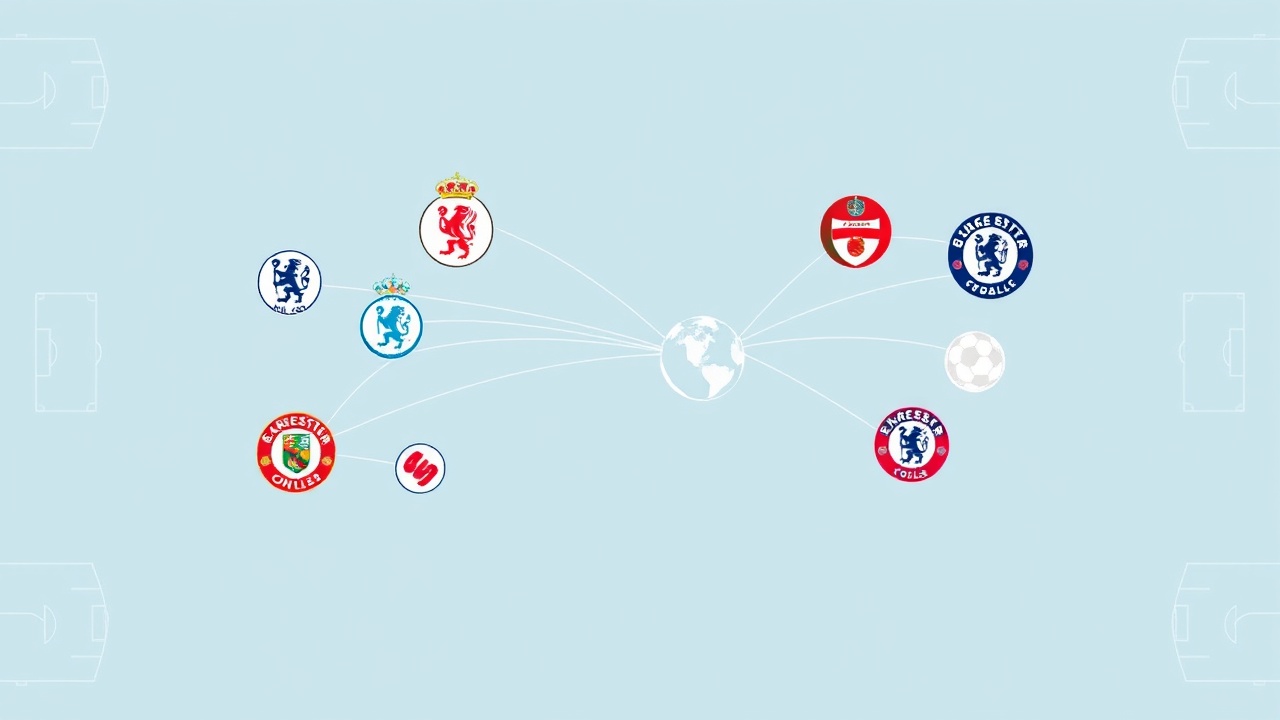Football Transfer Market Insights
As fans of football, it’s a common refrain to hear supporters speculate about their team’s activity in the transfer market, often saying things like, “We’re signing a player from…” In the Premier League, teams feature a diverse mix of athletes hailing from both the UK and international origins. Players come from various tiers of the football hierarchy—some are promoted from lower league clubs chasing dreams, while others may be seeking a reboot after being part of higher-profile clubs that have stumbled. Recruitment also varies significantly in terms of financial investment, with some transfers involving hefty fees and lucrative salaries, whereas others seek bargain players.
Notable Transfer Patterns
Notable patterns have surfaced over recent seasons, particularly regarding the trading relationships between certain clubs. For instance, Arsenal and Chelsea are known to engage in multiple deals, while Newcastle United and Nottingham Forest have also shown a trend of frequent player exchanges. Chelsea’s connection with Brighton & Hove Albion seems particularly strong, and there’s a notable pipeline between Everton and Aston Villa.
Data Analysis
To better grasp these transfer trends, we turned to Transfermarkt, a data site that meticulously tracks player movements. We compiled comprehensive transfer data from the summer of 2020, following the resumption of football post-COVID-19 lockdown, up to February of this year. The analysis includes all clubs that have participated in the Premier League during this timeframe, as well as Sunderland, which has returned to the top tier for the upcoming season, bringing the total to 28 teams.
This analysis encompasses every kind of player transaction, including loans and free transfers, to illustrate the extent of movements among clubs. The graphics provided show those partnerships most frequently engaged in player trades. However, some clubs have remained relatively quiet in their dealings, such as Brentford, who have only facilitated a couple of player transfers with other Premier League clubs.
Key Transfer Statistics
Following the stats, we find clubs like Aston Villa and Everton at the top of the chart for transfers between them, with six players changing sides since 2020. This includes high-profile movements such as Lucas Digne and Amadou Onana heading to Villa, while Anwar El Ghazi and Ashley Young have made the opposite journey. The reasons behind such frequent exchanges aren’t always apparent; however, the going out of favor young players can be highly beneficial financially for both teams, aiding compliance with profitability and sustainability regulations.
Interestingly, Leeds United and Bournemouth also recorded six transfers between them, often benefiting from Leeds’ fluctuating league status and lesser negotiating power during relegation spells. Conversely, moves between Newcastle and Nottingham Forest total six; notable players like Jack Colback and Jonjo Shelvey have switched allegiances, signifying a strategic focus on optimizing squad depth.
Club Relationships and Future Trends
Some teams also demonstrate a willingness to engage in multiple transactions, such as the rapport built between Chelsea and Brighton. Over recent years, players like Moises Caicedo and Robert Sanchez have exchanged the south coast for the capital, a trend attributed in part to Chelsea’s sporting director previously being Brighton’s head of scouting, ensuring familiar ties that facilitate these deals.
On a contrasting note, it’s striking to note the lack of activity between certain clubs; for example, Arsenal has not conducted any business with teams such as Burnley, Ipswich Town, Liverpool, and more. Such disparities in transfer frequency highlight how football relationships are often shaped by strategy, convenience, and past connections.
With these transfer trends likely to persist, fans are left to ponder whether their clubs will continue to seek talent from familiar sources or explore new opportunities elsewhere. Expect more movement as the transfer deadline date approaches this September, where patterns may evolve further, and transactional histories could influence future dealings.




